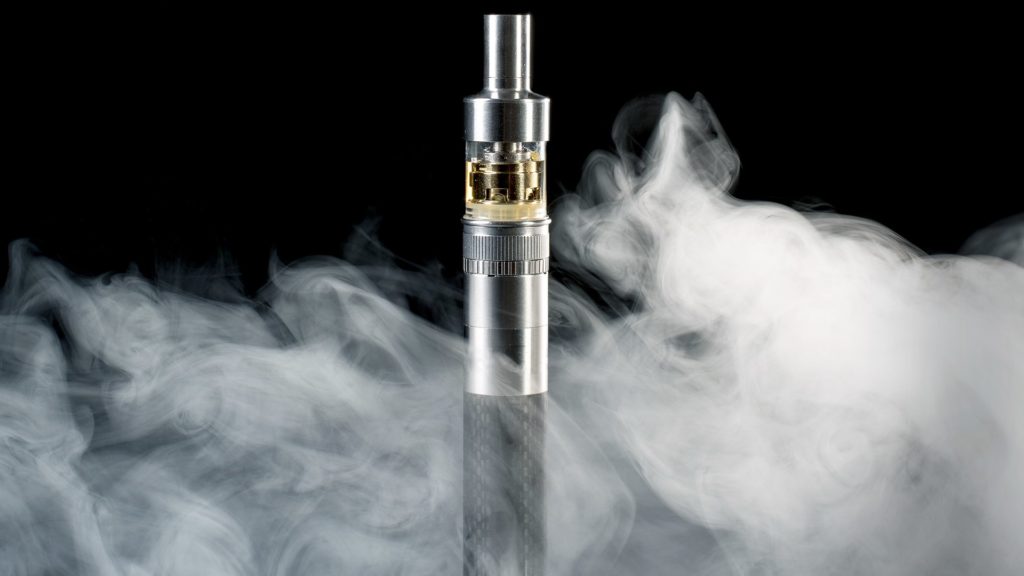An article <https://ajph.aphapublications.org/doi/10.2105/AJPH.2019.305424> published on Wednesday, January 8, 2020 in the American Journal of Public Health (AJPH) conclusively refutes the now too often-repeated erroneous claim that e-cigarettes have been proven to be 95% safer than regular cigarettes.

While the evidence to date indicates that e-cigarettes do expose users to fewer harmful chemicals than traditional cigarettes, the evidence of the harms of these products continues to emerge and the growing body of evidence indicates that they are definitely not safe, especially for kids and others who do not currently use tobacco products. Most importantly though, given that studies continue to raise new concerns about e-cigarettes, it is clear that the evidence is insufficient to reach definitive conclusions regarding their relative health risk compared to cigarettes.
The article calls the “95% safer” estimate, “a ‘factoid’: unreliable information repeated so often that it becomes accepted as fact.” This new article should once and for all relegate this unscientific conclusion as unusable. It is also important to recognise that for millions of kids who are now using e-cigarettes, the debate about just how harmful these products are in comparison to cigarettes misses the point. For these kids, the harms are real, often immediate and the long-term effects unknown.
The AJPH article highlights how the widely repeated estimate that e-cigarettes are 95% safer than cigarettes stems from a 2013 meeting of 12 individuals, and gained prominence due to its appearance in a 2015 Public Health England (PHE) report. The original authors of the article used to justify the 95% claim acknowledged at the time that “our understanding of the potential hazards associated with using [e-cigarettes] is at a very early stage” and a “limitation of this study is the lack of hard evidence for the harms of most products.
Since 2013 a substantial amount of new evidence has emerged about e-cigarettes, as summarised in the article published. The authors note that e-cigarettes have changed significantly over that span. The devices are now more powerful, create more aerosol, and expose users to more toxicants. The proliferation of e-liquids with nicotine salts allow users to inhale significantly higher levels of nicotine. More research emerged about the toxicants in e-cigarettes, and their potential respiratory and cardiovascular effects. As this newer evidence of potential harm has accumulated, the prevalence of use among kids has dramatically increased, as well as the growing evidence that e-cigarette use is associated with subsequent cigarette smoking among youth and young adults. In just two years there has been a 135% increase in high school students using e-cigarettes and there remains no conclusive evidence that e-cigarettes help adults to quit.
This article adds to criticism from many other scientific sources. A 2015 editorial in The Lancet outlined the serious flaws about the 95% claim <https://www.thelancet.com/journals/lancet/article/PIIS0140-6736(15)00042-2/fulltext> and concluded that the “opinions of a small group of individuals with no pre-specified expertise in tobacco control were based on an almost total absence of evidence of harm. It is on this extraordinarily flimsy foundation that PHE based the major conclusion and message of its report.”
As the new AJPH article notes, “the evidence-lacking estimate derived in 2013 cannot be valid today and should not be relied upon further.” It certainly should not be used to justify making fundamental changes to our ability to review and regulate the most popular tobacco product among kids.
The FDA must vigorously enforce the May 2020 deadline for e-cigarette manufacturers to apply to the FDA and demonstrate a net public health benefit in order to get the needed authorisation to keep their products on the market.
The authors of the AJPH article include
Thomas Eissenberg of Virginia Commonwealth University and Aruni Bhatnagar with
the American Heart Association Tobacco Regulation Centre at the University of
Louisville, along with Simon Chapman, Sven-Eric Jordt, Alan Shihadeh and Eric
K. Soule.
By Matthew L. Myers, President of the Campaign for Tobacco-Free Kids
